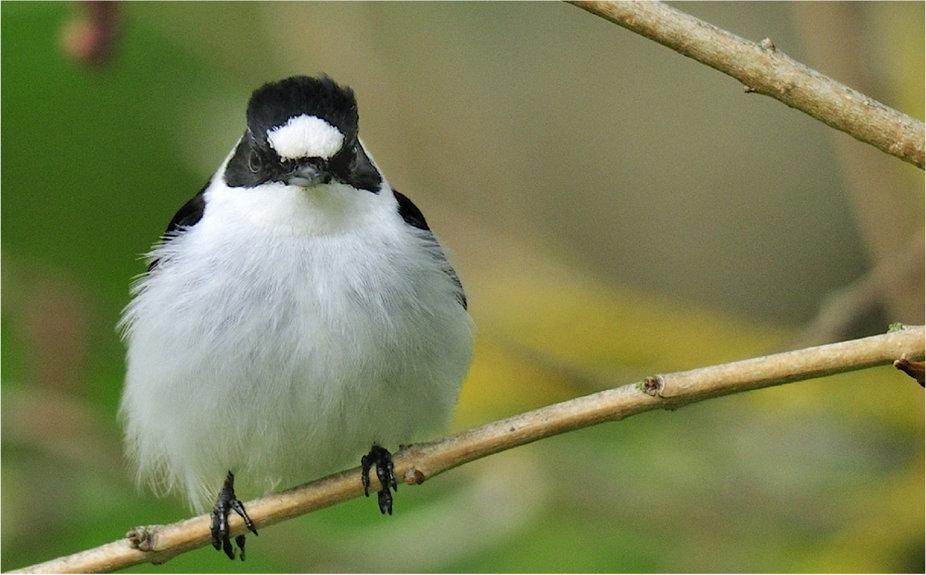Climate change is making birds uglier after ‘dramatic’ U-turn in evolution, finds study
Elaborate ornaments used to signal sexual fitness, which have delighted generations of birdwatchers, could start to disappear as animals come under pressure from global warming

Your support helps us to tell the story
From reproductive rights to climate change to Big Tech, The Independent is on the ground when the story is developing. Whether it's investigating the financials of Elon Musk's pro-Trump PAC or producing our latest documentary, 'The A Word', which shines a light on the American women fighting for reproductive rights, we know how important it is to parse out the facts from the messaging.
At such a critical moment in US history, we need reporters on the ground. Your donation allows us to keep sending journalists to speak to both sides of the story.
The Independent is trusted by Americans across the entire political spectrum. And unlike many other quality news outlets, we choose not to lock Americans out of our reporting and analysis with paywalls. We believe quality journalism should be available to everyone, paid for by those who can afford it.
Your support makes all the difference.For years, male flycatchers have grown a sparkling white patch on their forehead every breeding season to signal their attractiveness as a mate and issue a warning to any rivals.
The bigger the patch, the greater the catch was the essential message.
But a major new study of collared flycatchers on the Baltic island of Gotland, spanning more than 30 years, has discovered a “dramatic reversal” in the evolution of this trait in a finding that suggests climate change could result in many birds becoming less attractive.
Where once a large patch helped the males to reproduce, it now has a negative effect, the researchers found. And, as a result, the patch has gradually gotten smaller.
The researchers said other studies suggested this reduction in “ornamentation” could be happening all over Europe and that more species could be similarly affected.
Over the course of the study from 1981 to 2014, the average temperature in Gotland rose by 1.5 degrees Celsius.
And the warmer weather was found to be linked to the reduction in patch size. After a cold spring, “highly ornamented” males did well, but after a warm one they did not and the balance of power between small and large-patched males finally switched in the late 1990s.
The precise mechanism driving the change has not been established, but biologists have long studied the evolutionary pros and cons of elaborate ornamentation to attract a mate versus putting all efforts into straight-forward survival so an animal stays alive and is therefore still able to breed.
For example, growing eye-catching feathers might increase the chance of sex but also attract the attention of predators.
Writing in the journal Nature Ecology & Evolution, the researchers said: “Annual fitness selection on forehead patch size switched from positive to negative during the study, a reversal that is accounted for by rising spring temperatures at the breeding site.
“Highly ornamented males were selectively favoured following cold breeding seasons but selected against following warm breeding seasons.”
They said this “dramatic reversal” suggested the “the balance of this ornamentation-survival trade-off was fundamentally altered over the study period”.
The researchers, Simon Evans and Lars Gustafsson of Uppsala University in Sweden, found that the average size of forehead patches decreased by about 10 per cent between 1981 and 2014.
The changes they found were on a similar scale to ones found by researchers who studied a collared flycatcher population in Hungary “suggesting that our results are representative of continent-wide changes to ornamentation in this species”.
“Based on this, we posit that climate change could similarly be impacting the eco-evolutionary dynamics of signalling in other species,” the researchers added.
An article published in the same journal commenting on the study said the abrupt about-turn in evolution had happened so quickly it was hard to believe.
“For male collared flycatchers, having a large white patch on your forehead signals that you are a fearsome rival, and an attractive mate,” wrote Cody Dey, of Windsor University, Canada, and James Dale, of Massey University, New Zealand.
“But while large patch size was thought to give males an evolutionary advantage, it seems that climate change is turning this advantage on its head.
“The authors found that males with large forehead patches had higher fitness than males with small patches in the early years of the study.
“However, this pattern reversed sometime between 1995 and 2000. In seven of the eight most recent years, males with small forehead patches had higher fitness than those with large patches, demonstrating, incredibly, a complete reversal in selection over the study period.”
They said it was possible that such sex-related finery could be lost not just from collared flycatchers, but other species, because of global warming.
“As Evans and Gustafsson show, some ornaments will decline in response to environmental change, and it is conceivable that some ornaments could disappear altogether,” they wrote.
But they also added: “There are also reasons to predict that climate change will drive the evolution of new, or exaggerated, ornaments in some species.
“Just as climate change will lead to winners and losers in terms of species’ abundance and distribution, it seems it may also lead to winners and losers in the global beauty pageant.”
Join our commenting forum
Join thought-provoking conversations, follow other Independent readers and see their replies
Comments